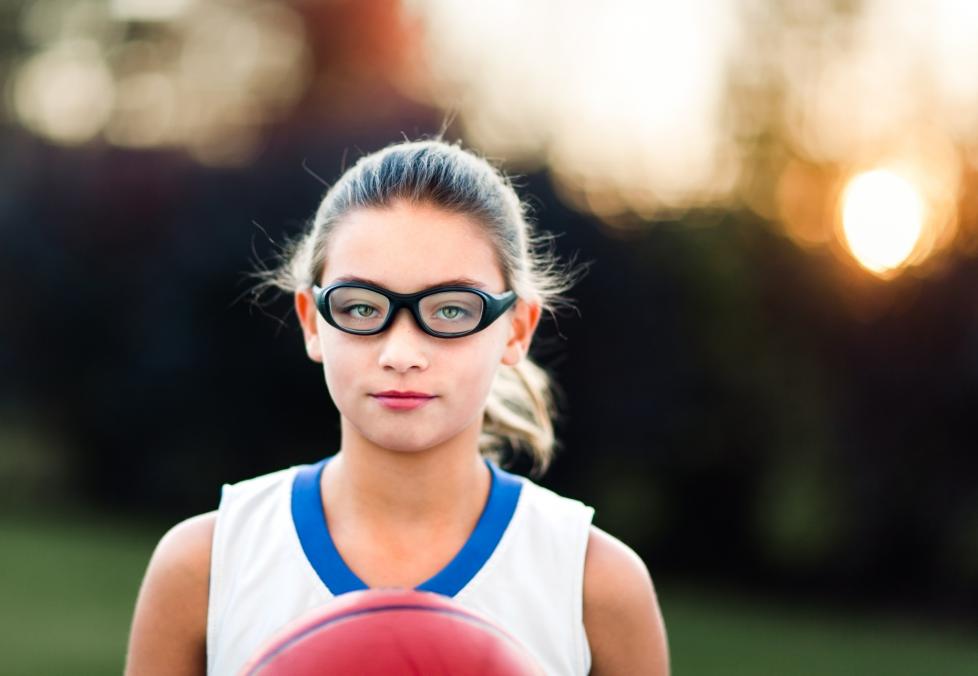
Two pairs and a free, quality eye exam for just $79.95
Everything you need to know to take care of your eyes — for life.
Wearing the right eyewear on the job or field can boost your performance and keep you safe.

You wouldn’t go for a bike ride without wearing a helmet to protect your head—so why are so many of us playing sports and tackling home-improvement projects without wearing safety glasses for our eyes?
It’s a risk that everyone should take seriously: More than 2,000 Americans hurt their eyes at work every day, according to the group Prevent Blindness. Another 25,000-plus kids and adults get treated for sports-related eye injuries every year. And in an average year, accidents involving common household products lead to 125,000 eye injuries.
Accidents like these are mainly preventable. In fact, both Prevent Blindness and the National Eye Institute (NEI) suggest that an estimated 90% of all eye injuries could be avoided by wearing protective eyewear.
“If you’re playing sports or engaging in any type of work or activity where there’s a chance of something hitting your eye, you need eye protection,” says Heather Klatt, director of retail operations at National Vision, the parent company of America’s Best Contacts & Eyeglasses.
Whether you’re a weekend warrior or a DIY home-improvement enthusiast, here’s exactly what to look for in a pair of safety glasses or sports goggles.
Has it been a while since your last eye exam? Now’s the time to book an appointment!
Despite the number of sports-related eye injuries each year, most youth sports programs don’t require the use of eye protection. And chances are, your workplace softball league doesn’t enforce that rule, either.
“Safety eyewear for sports-and-recreational use needs to pass government impact-resistance testing, but it isn’t mandated by the Occupational Safety and Health Administration (OSHA),” says Klatt.
Translation: It’s up to you, as a parent, to make sure that your child wears protective eyewear—and that you set a good example by wearing it yourself.
Athletes who are at risk for eye injuries—either by a flying tennis ball or softball, for example, or a flailing elbow or knee—should opt for protective eyewear that’s made with super strong polycarbonate, which is 10 times more impact-resistant than other forms of plastic, according to the NEI.
“Many times, these glasses have saved someone from losing their eyesight,” says Klatt.
The best type of safety goggles for you may depend on the type of sport you play. For example, if your go-to sport involves a ball, Klatt suggests opting for a wrap frame (where the lenses stretch around to the sides of your eyes) with a cushioned interior, which will help lessen the impact if the ball hits you in the face.

Two pairs and a free, quality eye exam for just $79.95
For shooting sports, she recommends a full-wraparound frame where the lenses curve even further around your face. When trying on sports glasses, ask the optician to help you check the fit—frames that are too loose or too tight will get in the way of your fun.
Keep in mind, too, that some athletes may be more likely to sustain eye injuries than others. According to a 2018 study in Pediatrics, the top three riskiest sports were basketball, baseball and softball, and shooting with a non-powder gun (including BB guns and paintball guns).
Regardless of which sport you or your child plays, don’t rely on a regular pair of glasses or sunglasses to ward off an eye injury. “Everyday eyewear is not safe to wear in an environment like a shooting range or where a ball could be flying at someone’s face,” says Klatt.
For example, “if you’re wearing a metal pair of glasses with nose pads and a soccer ball hits you in the face, the lenses can break, and the nose pads could cut your skin,” she says.
Your optician can outfit wraparounds with prescription lenses, which is a big plus if you rely on peripheral vision when you play. Or you can switch to a combo of contact lenses and safety glasses.
Depending on the size of your normal glasses, you might be able to wear your safety goggles over your specs. “They’ll absorb the impact better and cause less damage,” she says. But this is a clunky solution.
Recommended reading: The Pros and Cons of Contact Lenses for Kids Who Play Sports
More than 20,000 eye injuries occur at job sites each year that result in days away from work, according to the U.S. Bureau of Labor. These include cuts or scrapes from foreign objects, splashes from oil or grease, or burns from chemicals.
Depending on your job, OSHA may require you to wear eye protection that meets a certain set of safety requirements: Industrial safety eyewear must have a Z87 stamp on the frame, and the lenses must be stamped with a manufacturer’s mark that certifies that they meet the minimum standard from the American National Standards Institute.
“In some industries,” says Klatt, “OSHA will require that all employees wear approved safety eyewear while on the job, and they periodically do inspections to ensure it.”
The good news: The emphasis on eye protection seems to be making an impact. A study published in 2016 in the journal JAMA Ophthalmology found that the rate of eye injuries in the United States has been dropping since 2006, possibly because OSHA has since passed stricter regulations regarding workplace eye protection.
Often, these frames will have either removable or permanent side shields, and they can come as either a wraparound frame or in a full goggle-style frame, she says.
For people who are nearsighted or farsighted and need corrective lenses, Klatt also recommends opting for a pair of prescription safety eyewear, rather than trying to fit safety glasses over your regular specs. Prescription safety glasses meet the same OSHA requirements and can be worn in place of the glasses.
“More companies are requiring their workers who need corrective lenses to wear prescription safety glasses, and are even helping them pay for the eyewear,” she says. National Vision Inc., for example, has a national safety eyewear program that offers prescription safety glasses to companies at a reduced cost.
Recommended reading: Help! First Aid for 5 Common Eye Injuries
Eager to start building that accent wall you saw on HGTV? Before operating a saw, motor, sander, or any other type of recreational machinery, you’ll want to opt for the right eye protection.
According to a survey from the American Academy of Ophthalmology (AAO), only 35% of people say they always wear safety eyewear when performing maintenance projects or repairs around the house—despite the fact that nearly half of all eye injuries occur at home.
Anyone who’s working in a shop or environment where they’re at risk of a projectile should wear the same protective eyewear as the pros, says Klatt.
Remember, projectiles don’t need to be big to cause serious harm, according to the AAO. Smaller fragments of material, including wood, brick, cement, dust particles, or other irritants, can send you to the emergency room.
Klatt recommends buying a pair of safety glasses that also meet the ANSI standards. “That way, you know you have the required protection,” she says. “You can find this type of prescription eyewear at America’s Best, but if you don’t need a prescription, at least buy a nonprescription pair from the local hardware store.”
As with sports goggles, it’s a good idea to be fitted for a pair of safety glasses in person. “They need to fit properly and be the right size,” says Klatt. “If they are too big or too small,” she says, “then the glasses will not sit in the right place, and your eyes will not be properly protected.”
Similarly, a regular pair of glasses may not be enough to shield you from a stray piece of debris: “If you’re wearing a smaller frame and working in a woodworking shop, there is a lot of open space where your eye is vulnerable to small projectiles,” she says.
“After all,” she says, “you only get one set of eyes.”